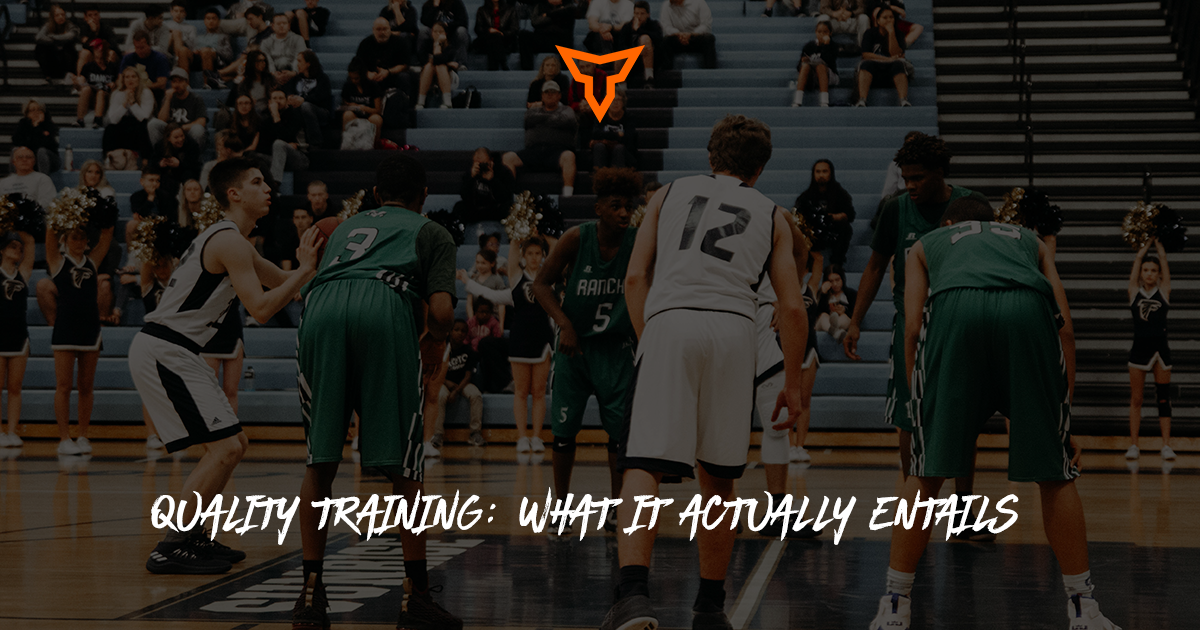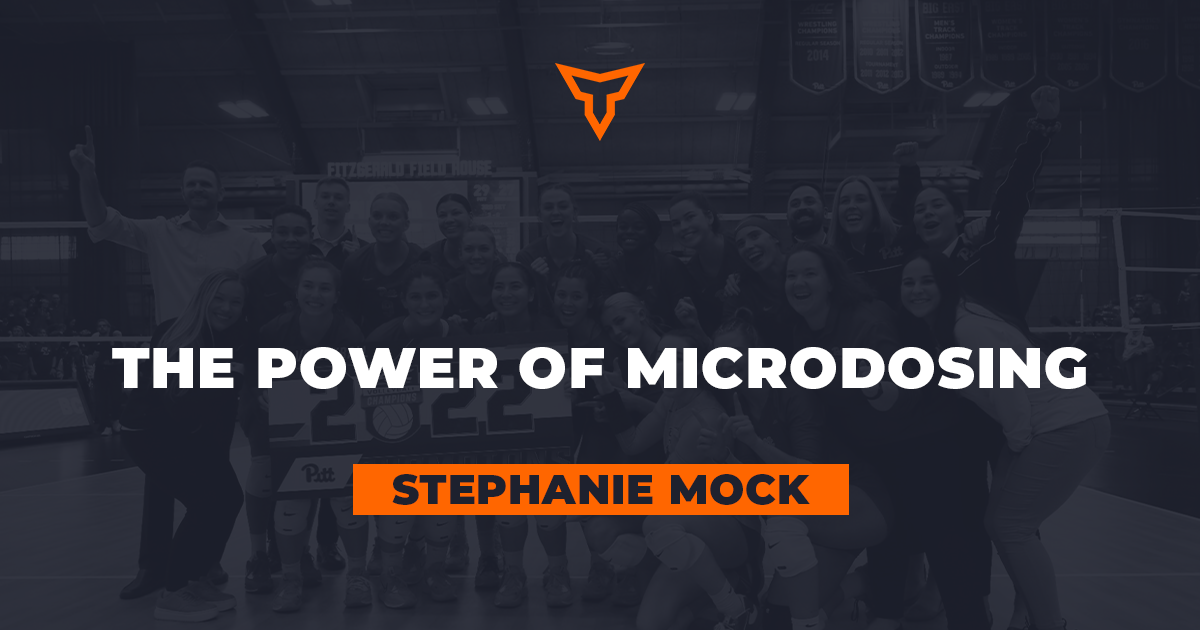Aerobic Conditioning: The Forgotten Tool in the Toolbox
Since being in the S&C field I have noticed a trend that continues to pop back up every now and then. It is by no means every strength coach, but it is a frequent topic that I personally feel needs to be addressed. That topic is conditioning and specifically aerobic training. For too many strength coaches, it is a quality that gets put aside and often a topic many coaches are least educated and/or very biased on. I will admit this was a topic I was biased toward until working in the military setting and seeing the added benefits of aerobic training. Now, I personally believe we as strength coaches do not incorporate or utilize that tool enough. It is a quality that is tremendously overlooked and something that I look back on and believe I should have done more with the college athletes that I was working with.
As an industry, I often think about why or how we came to the conclusion that aerobic training is detrimental or bad for any athlete. Is it because it’s an old man sport (marathons and triathlons)? Is it because it’s boring to coach, not flashy, or is it because it requires high volume/low intensity to cause a training adaptation and most coaches are given little time? I have often heard the term for long slow distance runs as “Junk miles”. We say things like you’re just causing, adding to overuse injury, or you’re reducing the athlete’s ability to put on muscle mass. I now look at aerobic conditioning as any other exercise. There's a time and place for everything, different sports and personnel require specific tools, and appropriate progressions. All those same bad notions could be easily said about the bench press in most strength coaches’ programs.
As a coach, I often read that the aerobic/oxidative system should be regarded as the base for the glycolytic and ATP-CP system. What does that mean? Individuals with a high aerobic base and efficiency can operate and function at higher intensities while maintaining high levels of efficiency. In simple terms, they can do more overall work while expending less energy. It allows individuals to red line (Zone 5) more often or stay in the red longer. It is also the main driver for recovery, working in the background in between bouts of intervals (faster recovery time) and in-between workouts which means individuals can handle more overall volume. Having the ability to train more volume in the glycolytic and ATP-CP will improve performance metrics. That doesn't include all the actual health benefits for including additional aerobic training such as increased energy throughout the day, improved cognitive function, and longer life span.
The sport and workload of an individual will dictate how much time should be put towards aerobic training. Individuals who handle very high stress situations, i.e. military members or college athletes with bad sport coaches may require more aerobic work to tolerate the demands. Many marathon and triathlon programs maintain an 80/20 ratio of aerobic to anaerobic conditioning. Meaning 80% of conditioning is spent towards that aerobic long slow, conversation pace, zone 2 training. Then 20% in that glycolytic/ATP-CP system, zone 4 and zone 5 on a heart rate. Some programs will maintain that 80/20 ratio the entire program and gradually add more time each week. Other programs will fluctuate the ratio just slightly from week-to-week or groups for weeks. Possibly beginning with 90/10 ratio and progressing to 85/15, 80/20, and possibly 75/25 for peaking. Listed below is a simple progression you can use to progress programs year-round. Keep in mind the phase lengths can change for whatever your situation allows.
|
Phase/Weeks |
Ratio |
Intent |
|
Phase I Weeks 1-8 |
90/10 |
Base Building |
|
Phase II Weeks 9-16 |
80/20 |
Acclimate to workload |
|
Phase III Weeks 16-20 |
75/25 |
Building Anaerobic Capacity |
Warmups and cooldowns are great ways to incorporate aerobic work to ensure adequate ratios. Not all workouts need to be specifically all aerobic or all anaerobic. Depending on where you place your anaerobic work, it can elucidate a different training effect. Listed below is an example of 4 different types of workouts you might see in an endurance-type program and hopefully might spark some ideas for your situation.
|
Option A |
Option B |
Option C |
Option D |
|
Speed Development |
Speed Play |
Fast Finish |
Base Building |
|
CNS Driven Builds overall speed |
Maintains/exposes Speed during base building |
Enhances conditioning or ability to run fast as fatigued |
Can serve as active recovery or easier conditioning day |
|
1 x 5 Min Zone 1 (Warmups) |
1 x 5 Min Zone 1 (Warmups) |
1 x 5 Min Zone 1 (Warmups) |
1 x 5 Min Zone 1 (Warmups) |
|
5 x 10 on/50 sec Rest Zone 5/Zone 1 |
1 x 5 Min |
1x20 Min |
1x25 Min |
|
1 x 15 Min |
5 x 1 Min On/2 Min Rest Zone 4-5, Zone 1 |
1 x 5 Min |
|
|
1 x 5 Min |
1 x 5 Min |
As you can see, simply changing where you put your high-effort minutes drives a slightly different training effect and can be a wonderful tool for helping an individual’s weakness or changing phase emphasis. Again, depending on the type of individual these may be helpful tools. All these different conditioning tools or ideas do not have to be running or time on feet. All these different methods can be applied through alternate cardio equipment such as a spin bike, rower, or other pieces of equipment. Which, I would like to add, is a form of resistance training that I believe many coaches often overlook. Many strength coaches assume cardio equipment makes you skinny however it is a form of resistance. I would argue many marathon runners and triathlons athletes are skinny because a higher VO2 favors a smaller/skinner athlete and because the number of calories to consume while maintaining a higher body weight with a tremendously high workload would be insane. Not because they used a rower or bike to train on for 30+ minutes. Alternate cardio equipment can be a great tool used for improving strength/hypertrophy in specific areas you are trying to improve.
The objective of this article was to help put this trend to rest that aerobic cardio/ conditioning is a terrible or bad means of training. In the end, depending on the athletes or individuals you are working with, this can be a powerful and helpful tool for enhancing one’s life, health, and potentially performance. Again, depending on the type of group or athlete you are working with these methods might require creativity, however the concept remains the same. A higher aerobic base individual has more energy, and a bigger gas tank that allows them to handle more workload. If individual A can tolerate more workload than individual B then individual A is going to improve more. Aerobic training tends to be a topic that many strength coaches seem to lack the education on, and I will admit it was something I was not well-rounded in. Hence why I felt the need to write this article. In the end, strength coaches need to put down biases and look at being more educated and well rounded in ALL aspects of performance training. If you limit your knowledge, you limit your capabilities, which limits the capabilities for the individual’s you are working with.
Subscribe to our blog
Subscribe to receive the latest blog posts to your inbox every week.
Related posts

Quality Training: What it Actually Entails

The Power of Microdosing


